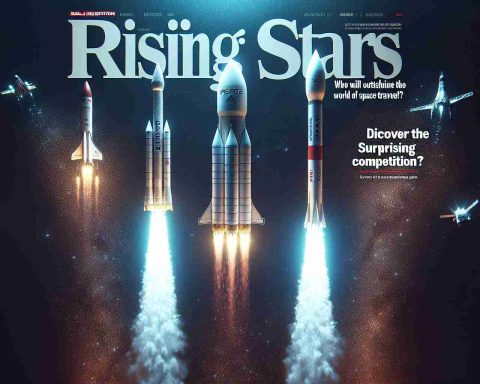A New Era on the Horizon
Recent satellite images reveal a significant build-up of Russian military assets at strategic locations in Syria, specifically at the Khmeimim Air Base and Tartus naval base, signaling shifting dynamics within the region. Despite ongoing assertions from Moscow about negotiating terms to retain control of these vital bases, evidence suggests a robust withdrawal of forces is underway.
These latest satellite visuals, captured by Maxar Technologies, depict a variety of military vehicles and equipment lined up systematically at Khmeimim, alongside cargo aircraft poised for departure. Notably, the S-400 missile defense system, previously stationed there, has been entirely dismantled—a clear indicator of Russian troop reductions.
Further examination of Tartus showcases clusters of military assets gathered at a pier, aligning with reports of Russian units consolidating towards the naval base. Observations of ships and naval assets navigating towards Tartus hint at an organized extraction effort.
Military officials have commented on the situation, indicating that Russian operations in the area have stalled, suggesting a complete reevaluation of their presence in Syria. The withdrawal of naval forces has been particularly pronounced, with vessels leaving Tartus while maintaining a presence in nearby waters.
As the situation evolves, the implications for regional stability and international dynamics remain to be seen. The strategic landscape is undeniably shifting as Russia’s military focus in Syria appears to be waning.
Shifting Sands: Understanding Russia’s Military Withdrawal from Syria
Analyzing Russia’s Strategic Retreat in Syria
Recent developments in Syria indicate a significant realignment of military assets by Russia, signaling potential changes in the geopolitical landscape of the Middle East. This article examines the implications and trends surrounding the withdrawal of Russian forces from strategic locations in Syria, such as the Khmeimim Air Base and Tartus naval base.
# Trends and Insights
1. Dramatic Asset Reduction: The dismantling of the S-400 missile defense system at Khmeimim is indicative of a systematic reduction of Russian military capabilities in Syria. This significant move may reflect a shift in Russia’s military strategy in the region, possibly in response to changing alliances and dynamics on the ground.
2. Increased Focus on Naval Operations: While reports indicate a withdrawal from land-based assets, Russia seems to be consolidating its naval presence in the eastern Mediterranean. The extraction efforts observed at Tartus suggest an ongoing strategy to maintain a strategic maritime foothold while reducing overall troop levels.
3. Impact on Regional Stability: The pullback of Russian forces could create a power vacuum in Syria, potentially emboldening other regional players like Iran, Turkey, or local Syrian factions. This development might prompt shifts in alliances and spark renewed conflict, as various groups vie for influence in a post-Russian presence environment.
# Pros and Cons of Russia’s Withdrawal
Pros:
– Reduced Military Escalation: A decrease in Russian military presence could lower tensions among various state and non-state actors, potentially paving the way for more diplomatic solutions.
– Resource Allocation: It may allow Russia to reallocate its military resources to other theaters, such as Eastern Europe or the Arctic, where they may perceive greater strategic interest.
Cons:
– Increased Instability: The withdrawal could lead to greater volatility as local factions may feel empowered to assert control over territories previously influenced by Russian backing.
– Loss of Influence: Russia risks ceding influence over Syria to other nations, particularly Iran and Turkey, which may seek to fill the void left by Russian forces.
# Limitations of the Current Situation
Despite the potential benefits of this military withdrawal, several limitations remain. The ongoing presence of Iranian-backed militias and the complexity of Syrian politics mean that the prospects for a stable transition may be tenuous. Furthermore, the withdrawal could complicate Russia’s relations with the Syrian government, which has relied heavily on Russian support throughout the conflict.
# Predictions for Future Developments
As various factions adjust to the changing balance of power, experts predict a rise in proxy conflicts within Syria. Additionally, the potential for renewed violence against Kurdish forces in northern Syria remains high as they too operate under fragile alliances with both the U.S. and regional powers.
# Conclusion
The strategic withdrawal of Russian forces from Syria reflects broader shifts in military strategy and geopolitical interests. Observers must closely monitor the evolving situation, as the implications of this withdrawal could reverberate across the Middle East for years to come.
For more insights on current military trends and geopolitical analyses, visit [Military Times](https://www.militarytimes.com).



















